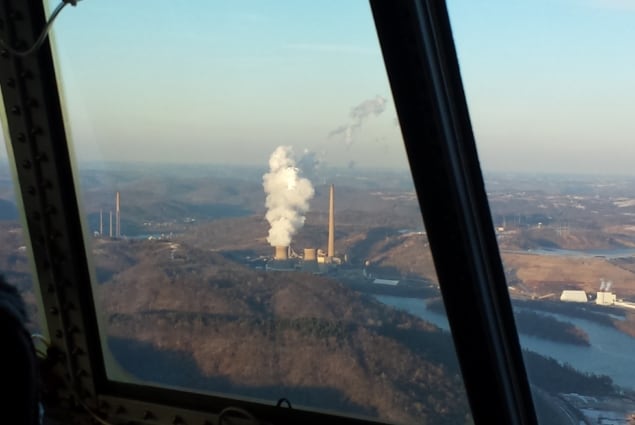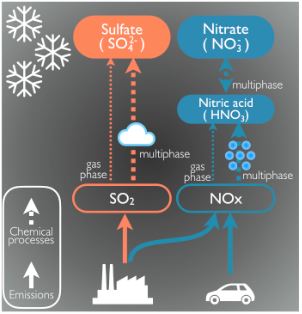
Over roughly the last decade, air quality regulations have lowered sulphur dioxide pollution in the US by nearly 70% and nitrogen oxides by around one-third. But air has improved more in the summer, with winter air pollution proving difficult to shift. Now a study of pollution plumes in winter has discovered why.
“In the past 10 years or so, the summer air pollution levels have decreased rapidly, whereas the winter air pollution levels have not,” says Viral Shah, then of the University of Washington, US. “Air quality in summer is now almost the same as in winter in the eastern US. We have pinpointed the chemical processes that explain the seasonal difference in response to emissions reductions.”
Shah and colleagues flew through pollution plumes over New York City, Baltimore, Cincinnati, Columbus, Pittsburgh and Washington DC, and above the coal-fired power plants of the Ohio River Valley. Their measurements were part of the 2015 Wintertime Investigation of Transport, Emissions and Reactivity (WINTER) campaign. They also used ground-based observations; and the GEOS-Chem chemical transport model.
Over the last decade, summertime levels of particulates in the eastern US have dropped by about a third. But wintertime levels have decreased by only half as much. Particulates form from sulphates – resulting from sulphur dioxide released mainly by coal-fired power plants – and nitrates, created from nitrogen oxides (NOx).

“The air quality models that we use to understand the origin of air pollution perform quite well in summer, but have some issues in the wintertime,” says Lyatt Jaeglé of the University of Washington. “Before this study, we could not reproduce the observed particulate composition in winter.”
In summer, particulate numbers fall as emissions of NOx and sulphur dioxide decrease. Some of the emitted NOx and sulphur dioxide remains in the gas phase rather than forming particulates, becoming broken down by sunlight or deposited on land.
In winter, when there’s less sunlight and temperatures are lower, more chemistry occurs in the liquid phase – on the surfaces of existing particulates or on liquid droplets and ice crystals in clouds – than the gas phase. In the liquid phase, the study showed, when emissions of sulphur dioxide and NOx are lower, sulphur dioxide converts to sulphate more efficiently because more oxidants are available. And as sulphates decrease, the particulates are less acidic, so that NOx can convert more easily to nitrates.
That means the total amount of particulates in wintertime has dropped more slowly than the primary emissions have decreased.
“It’s not that the reductions aren’t working,” says Shah, who’s now at Harvard University, US. “It’s just that the reductions have a cancelling effect, and the cancelling effect has a set strength. We need to make further reductions. Once the reductions become larger than the cancelling effect, then winter will start behaving more like summer.”
At currently forecast rates of emissions reductions, air quality in winter will continue to improve only gradually until at least 2023.
“We now have a better tool to look at what is the best strategy to improve wintertime air quality on regional scales in the eastern US, and potentially other places, like Europe and Asia,” says Jaeglé.
Shah, Jaeglé and colleagues reported their findings in PNAS.
- This article is based on a press release from the University of Washington.


